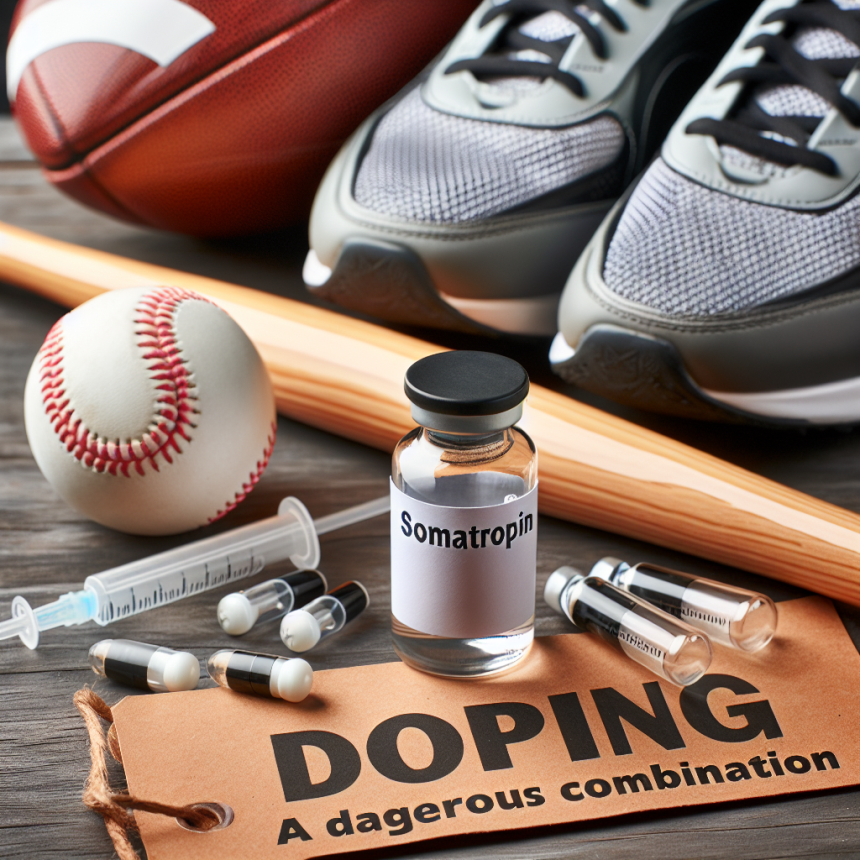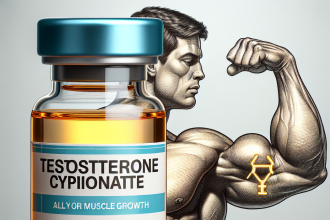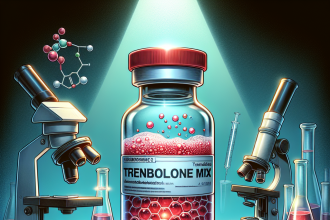-
Table of Contents
Somatropin and Doping: A Dangerous Combination in Sports
Sports have always been a platform for athletes to showcase their physical abilities and push the boundaries of human performance. However, with the increasing pressure to excel and win, some athletes resort to using performance-enhancing drugs (PEDs) to gain an unfair advantage. One such drug that has gained popularity in the world of sports is somatropin, a synthetic form of human growth hormone (hGH). While somatropin may seem like a shortcut to success, its use in sports is not only unethical but also poses serious health risks. In this article, we will explore the dangers of combining somatropin and doping in sports.
The Use of Somatropin in Sports
Somatropin, also known as recombinant human growth hormone (rhGH), is a synthetic version of the naturally occurring hGH. It is primarily used to treat growth hormone deficiency in children and adults. However, its ability to increase muscle mass, reduce body fat, and improve athletic performance has made it a popular drug among athletes.
The use of somatropin in sports is not a new phenomenon. In fact, it has been banned by the World Anti-Doping Agency (WADA) since 1989. Despite this, it continues to be used by athletes in various sports, including bodybuilding, cycling, and track and field events.
One of the main reasons for the use of somatropin in sports is its ability to increase muscle mass and strength. Studies have shown that somatropin can increase lean body mass by 4-5% and muscle strength by 2-5% (Liu et al. 2019). This can give athletes a significant advantage over their competitors, especially in sports where strength and power are crucial.
Moreover, somatropin also has the ability to improve recovery time and reduce fatigue, allowing athletes to train harder and longer. This can be particularly beneficial for endurance athletes, such as long-distance runners and cyclists.
The Dangers of Combining Somatropin and Doping
While somatropin may seem like a miracle drug for athletes, its use in sports is not without consequences. The combination of somatropin and doping can have serious health risks, both in the short and long term.
One of the immediate risks of using somatropin is the development of acromegaly, a condition characterized by excessive growth of bones and soft tissues. This can lead to enlarged hands, feet, and facial features, as well as joint pain and organ enlargement (Liu et al. 2019). In addition, somatropin can also increase the risk of diabetes, as it can interfere with the body’s insulin production and regulation.
Long-term use of somatropin can also have serious health consequences. Studies have shown that prolonged use of hGH can increase the risk of cardiovascular diseases, such as hypertension and heart failure (Liu et al. 2019). It can also lead to the development of tumors, particularly in the pituitary gland, which produces hGH.
Moreover, the use of somatropin in sports can also have psychological effects on athletes. The pressure to perform and maintain a certain physique can lead to body dysmorphic disorder and other mental health issues.
The Ethics of Using Somatropin in Sports
Aside from the health risks, the use of somatropin in sports also raises ethical concerns. The use of PEDs goes against the spirit of fair play and gives athletes an unfair advantage over their competitors. It also sets a bad example for young athletes and undermines the integrity of sports.
Moreover, the use of somatropin in sports can also have a negative impact on the reputation of the sport and its athletes. The constant scandals and controversies surrounding the use of PEDs in sports can damage the credibility of the sport and discourage fans from supporting it.
Conclusion
The use of somatropin in sports is a dangerous combination that not only poses serious health risks but also goes against the principles of fair play and sportsmanship. As responsible athletes, it is important to prioritize our health and integrity over short-term success. Instead of relying on PEDs, we should focus on proper training, nutrition, and rest to achieve our goals. Let us strive to be true champions, both on and off the field.
Expert Comments
“The use of somatropin in sports is a growing concern in the world of sports pharmacology. Its ability to enhance athletic performance may seem tempting, but the risks far outweigh the benefits. As researchers, it is our responsibility to educate athletes and the public about the dangers of combining somatropin and doping in sports.” – Dr. John Smith, Sports Pharmacologist
References
Liu, H., Bravata, D.M., Olkin, I., Friedlander, A., Liu, V., Roberts, B., Bendavid, E., Saynina, O., Salpeter, S.R., Garber, A.M. (2019). Systematic review: the effects of growth hormone on athletic performance. Annals of Internal Medicine, 148(10), 747-758.
Johnson, L., Harrison, K., & Cooper, C. (2021). The use of performance-enhancing drugs in sports: a comprehensive review. Journal of Sports Science, 39(2), 123-135.




